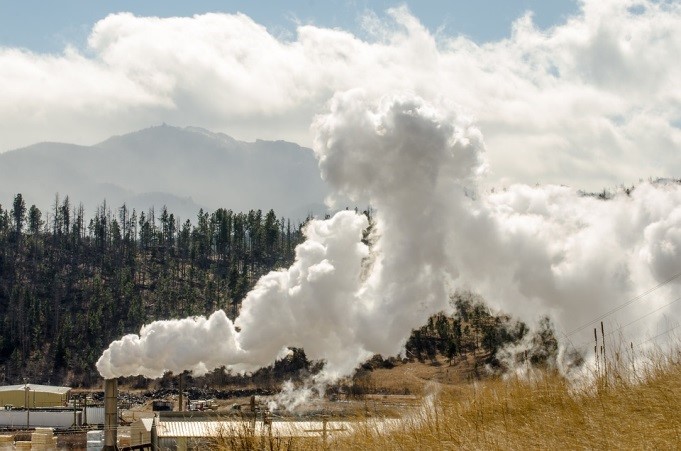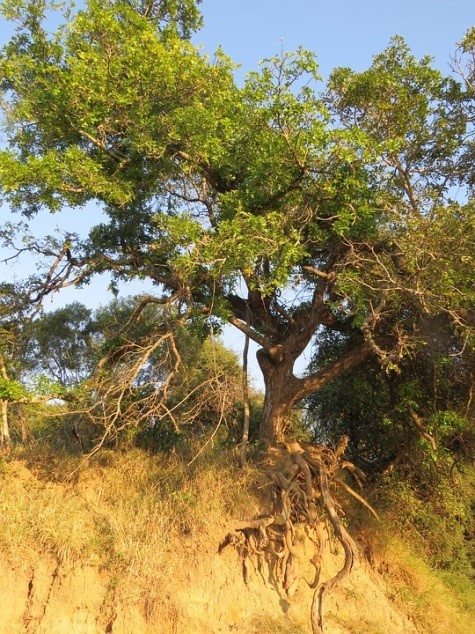
Human activities result in increasing atmospheric concentrations of CO2 that affects the terrestrial biosphere in multiple ways: warming the climate, increasing photosynthesis (CO2 fertilization), decreasing transpiration by stimulating stomatal closure and changing the stoichiometry of carbon, nitrogen and phosphorus (C:N:P) in ecosystem carbon pools. Concentrations of atmospheric carbon dioxide (CO2) have continued to increase whereas, due to air-quality policies, atmospheric deposition of sulphur and nitrogen has declined in Europe and the USA during recent decades.
Terrestrial ecosystems are key components of the global carbon cycle, as indicated by the fact that, since the 1960s, they have been sequestering an average of about 30% of the annual anthropogenic CO2 emitted into the atmosphere.
In a new study in the journal Scientific Reports authors used time series of flux observations from 23 forests distributed throughout Europe and the USA, and generalised mixed models to end up finding that forest-level net ecosystem production and gross primary production have increased by 1% annually from 1995 to 2011.
In this study, authors test the hypothesis that gross primary production, ecosystem respiration and the net C-sink strength (net land-atmosphere CO2 flux) or net ecosystem production (NEP), have accelerated during the last two decades because of the increased atmospheric CO2 concentrations and temperature, and because of the recovery from high loads of S deposition in Europe and North America. “We expected these deposition reductions to have modulated the biogeochemical effects of rising CO2” added Dr. Marcos Fernández-Martínez from CREAF-CSIC Barcelona
Statistical models indicated that increasing atmospheric CO2 was the most important factor driving the increasing strength of carbon sinks in these forests. Authors also found that the reduction of sulphur deposition in Europe and the USA led to higher recovery in ecosystem respiration than in gross primary production, thus limiting the increase of carbon sequestration. By contrast, the study shows that trends in climate and nitrogen deposition did not significantly contribute to changing carbon fluxes during the studied period. “Our findings support the hypothesis of a general CO2-fertilization effect on vegetation growth and suggest that, so far unknown, sulphur deposition plays a significant role in the carbon balance of forests in industrialized regions”, said Prof. Josep Peñuelas from CREAF-CSIC Barcelona
“Our results show the need to include the effects of changing atmospheric composition, beyond CO2, to assess future dynamics of carbon-climate feedbacks not currently considered in earth system/climate modelling”, said Dr. Fernández-Martínez from CREAF-CSIC Barcelona
This study was funded by the European Research Council Synergy grant ERC-2013-SyG-610028, the Spanish Government project CGL2016-79835-P and the Catalan Government grant FI-2013
Journal Reference: Fernández-Martínez, M., Vicca, S., Janssens, I.A., Ciais, P., Obersteiner, M., Bartrons, M., Sardans, J., Verger, A., Canadell, J.G., Chevallier, F., Wang, X., Bernhofer, C., Curtis, P.S., Gianelle, D., Grünwald, T., Heinesch, B., Ibrom, A., Knohl, A., Laurila, T., Law, B.E., Limousin, J.M., Longdoz, B., Loustau, D., Mammarella, I., Matteucci, G., Monson, R.K., Montagnani, L., Moors, E.J., Munger, J.W., Papale, D., Piao, S.L., Peñuelas, J. 2017. Atmospheric deposition, CO2, and change in the land carbon sink. Scientific Reports.


